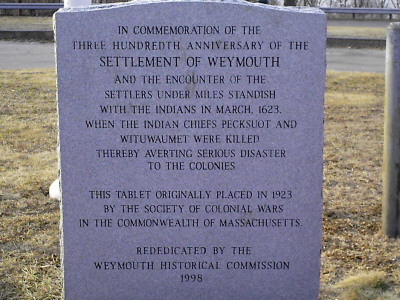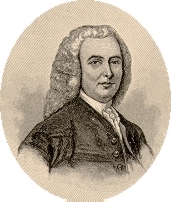La leyenda negra
Oliver Cromwell era una pieza de cuidado. Era comandante del invencible Nuevo Ejército Modelo, vencedor de la Guerra Civil, azote de Irlanda, Lord Protector de la «Commonwealth», terror de tiranos, defensor de la fe; en resumen, una de las peores personas que han vivido en Inglaterra. Pero él no lo hubiera creído así, ni tampoco aquellos que le escuchaban mientras hablaba al Parlamento inglés el 17 de septiembre de 1656. No, el «gran enemigo», el enemigo «de todo lo divino que cada uno de vosotros tiene» eran «los españoles».
Pocos de los puritanos de cabezas redondas que le escuchaban en el Parlamento aquel día habrían estado en desacuerdo con él: España era el imperio malvado, una cruel, codiciosa, intolerante raza de semi-bárbaros que imponía su dominio con la prisión, la hoguera y el potro de tormento de la Inquisición. No estaban contentos con suprimir a sus propios pobres ciudadanos con el yugo de la superstición e idolatría sino que también querían esclavizar al mundo entero. «En verdad» —Cronwell dijo a su audiencia— «los españoles están interesados en vuestras entrañas».
Esa ha sido la opinión de muchos durante los últimos cuatrocientos años. La Leyenda Negra —la imagen de España como una nación intolerante y cruel y la Inquisición como el colmo de la intolerancia— ha sido tan verdadera como el evangelio en muchas partes del mundo y la palabra Inquisición se ha convertido en sinónimo de caza de brujas, juicios-farsa, regímenes opresivos e intolerancia supersticiosa. ¿Cómo comenzó la Leyenda Negra? ¿Cuánto hay de verdad en sus acusaciones?
La Inquisición española fue fundada por los reyes Isabel de Castilla y Fernando de Aragón en 1480 para probar la buena fe de los conversos, los judíos convertidos al cristianismo. En el reino de los reyes católicos, la ortodoxia equivalía a lealtad política y, por tanto, usaron la Inquisición como un instrumento de la monarquía para asegurarse de ella. Bajo Tomás de Torquemada, la Inquisición cometió serios errores y en ocasiones fue más allá de lo justo en perseguir a los conversos, algunos de los cuales fueron entregados a la Inquisición por vecinos envidiosos de su riqueza o de su posición social. Durante los 15 primeros años de la Inquisición fueron ejecutados alrededor de 2,000 personas, pero hacia 1500, bajo un nuevo jefe, la Inquisición fue reformada considerablemente.
Desde aquel momento se convirtió en el más benévolo tribunal de toda Europa. A lo mucho, sentenció a muerte a 60 personas durante todo el siglo XVI, algo admirable en una época en que la gente podía ser condenada a muerte por crímenes triviales y cuando otras naciones quemaban en la hoguera a decenas de miles de mujeres inocentes acusadas de practicar la brujería. Inglaterra, bajo las reinas María e Isabel I, ejecutaron a más de 400 herejes de la forma más cruel imaginable, y excesos semejantes tuvieron lugar a lo largo y ancho de la Europa católica y protestante. Los extensos archivos de la Inquisición muestran que de las más de 7000 personas que fueron llevadas ante su tribunal en Valencia, sólo 2% fueron torturadas y sólo durante 15 minutos cada uno. Esto era una nonada en comparación con las doncellas de hiero, el potro de tortura, los azotes y la rueda aplastadora usada por los sistemas judiciales usados en los primeros años en la mayoría de las naciones modernas. Sin embargo la imaginación popular asocia irrevocablemente a la Inquisición española con verdugos encapuchados, torturas sádicas y malolientes calabozos. ¿Por qué ha sido España tan maltratada por la historia cuando otras naciones han sido mucho peores?
La respuesta está en la Reforma protestante, en el poder bélico de España y en la imprenta, que acababa de ser inventada. En 1517 Lutero prendió el fuego de la revuelta protestante a lo ancho del norte de Europa. La guerra inicial de palabras se convirtió en guerra sangrienta, pero el ejército de los príncipes protestantes no fue un enemigo suficientemente poderoso para las tropas de Carlos V, emperador de Alemania y rey de España. Derrotados en el campo de batalla, los protestantes recurrieron a la guerra de palabras a través de la imprenta. En 1567 publicaron un folleto, traducido del inglés, al alemán, francés y flamenco, titulado Descubrimiento y simple declaración de las acendradas y sutiles prácticas de la santa Inquisición española. El autor, que escribe con el pseudónimo de Montanus, pretendía haber sido él mismo víctima de la Inquisición. Este folleto es considerado como el inicio de la Leyenda negra y fue el golpe de propaganda más sensacional del milenio. La mayoría de las tan conocidas patrañas tuvieron origen en él. Se esparció con rapidez por la Europa protestante, terreno fértil pare recibir la semilla de la mala propaganda contra un enemigo al que odiaban y temían por razones tanto políticas como religiosas. Felipe II, hijo de Carlos V, gobernó en un imperio en el «que no se ponía el sol» y las décadas siguientes fueron testigo de un choque espectacular entre la Inglaterra protestante y la España católica, que culminó con la derrota de la Armada Invencible de España en 1588.
Mientras tanto, los propagandistas anti-españoles estaban atareados tejiendo otros dos hilos de la Leyenda Negra: que la Inquisición tenía un inmenso poder político y que la Inquisición había matado a cientos de miles de personas. En 1569, don Carlos, hijo de Felipe II, murió en un misterioso accidente y los enemigos de Felipe atacaron inventando una historia, repetida docenas de veces, hasta que adquirió carácter lapidario en el siglo XIX a golpe de pluma y batuta de Schiller y Verdi. La trama presentaba a don Carlos como mártir heroico de la libertad de conciencia. Por el contrario, Felipe II era un monstruo moral, empujado por el Gran Inquisidor a matar a su propio hijo para «salvar a la nación». Esta imagen de la Inquisición como la eminencia gris detrás del trono y de su poder policíaco que oprimía a la entera nación, ha tenido una larga vida.
Nada está más lejos de la verdad. La Inquisición nunca fue numerosa pues constaba solamente de dos o tres inquisidores y de un grupo de empleados en cada uno de los 20 tribunales que se encargaban de toda España. Tenían poder en los pueblos y ciudades, es verdad, pero su poder era limitado, con frecuencia controlado por asociaciones civiles, otras autoridades eclesiásticas y magistrados locales. En el campo, en el que vivían cuatro de cada cinco españoles, tenía poco poder. Los historiadores aseguran que la gran mayoría de los campesinos de las áreas rurales nunca habrían visto a un inquisidor en su vida.
El segundo hilo tiene origen en un folleto publicado en 1570. Era presentado como una carta a los inquisidores dándoles instrucciones para acabar con poblaciones enteras sospechosas de herejía. Hace tiempo ya se ha demostrado que es un documento falso, pero la leyenda sigue viva: la odiada Inquisición torturaba y mataba a miles, no, millones, de víctimas inocentes. La verdad es que la Inquisición sentenció aproximadamente a 4,000 personas durante sus 350 años de existencia, con lo cual es, con mucho, el tribunal nacional más benigno de Europa durante el mismo período.
«Todo se vale en el amor y en la guerra», escribió Shakespeare en aquella época, pero después de 400 años ya es tiempo de gritar: «¡Ya basta!» Sin embargo, el daño ya está hecho y la mayor lección de la Leyenda negra es el poder de la prensa. El norte de Europa, especialmente Inglaterra, usó la imprenta con mucha más frecuencia y eficacia que España. Sirva como ejemplo que entre los cuarenta autores más traducidos a lo largo de 25 años de historia, veinticinco con de lengua inglesa y ni uno solo es español. Los grandes de España consideraban indigno de un caballero responder a las acusaciones contra su país tramadas por la máquina protestante de propaganda. De ser posible, preferían decidir la contienda en un duelo. Está muy bien, pero tales caballeros murieron hace cuatro siglos, mientras la imagen pintada por sus enemigos sigue adornando los salones de la cultura popular en todo el mundo. La historia la escriben los vencedores y el vencedor ha sido la pluma, no la espada.
-----------------
Fuente: conoZe.com | La leyenda negra


 LinkBack URL
LinkBack URL About LinkBacks
About LinkBacks


 Citar
Citar




 . Sólo con el primer mensaje, Hyeronimus, tengo para darle caña un buen rato.
. Sólo con el primer mensaje, Hyeronimus, tengo para darle caña un buen rato. 


Marcadores